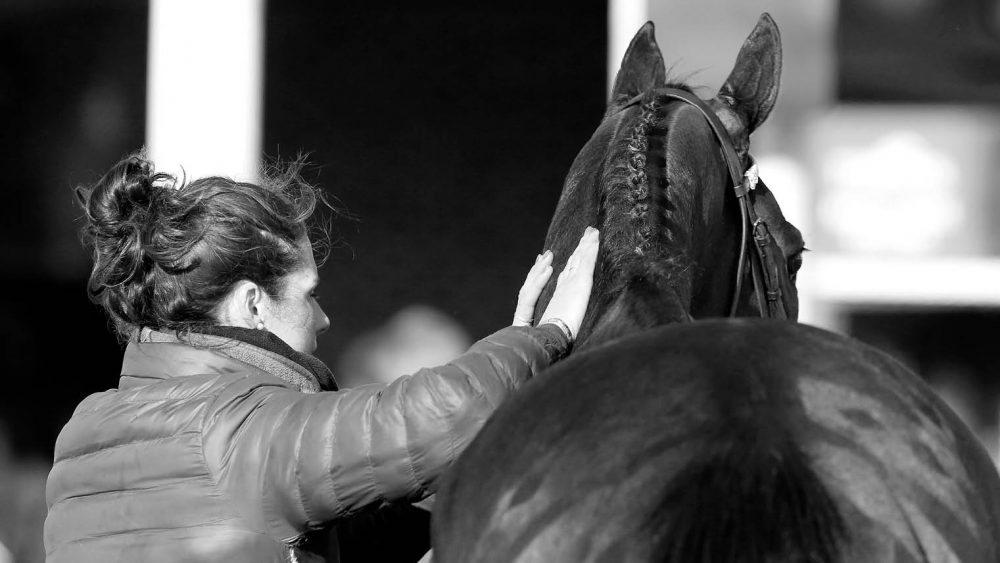Dr Richard Newton: The science behind the industry’s flu vaccination policies

Equine influenza is a highly contagious viral disease with typical clinical signs of a deep, hacking cough and nasal discharge with fever. It is occasionally fatal, though in many cases clinical signs usually resolve within 2 to 3 weeks. However, it has the potential to be highly disruptive to training and racing schedules. As a result, vaccination is used as the main means of protecting against the disease and is mandatory in racing Thoroughbreds. The aim of vaccination is two-fold; to protect the vaccinated individual from becoming ill and also to limit the spread of infection.
How then should we use vaccination in response to an outbreak of infection? To help answer this question, we have built mathematical models of infectious disease outbreaks. These can be an extremely useful tool in the development and evaluation of disease prevention and control measures. Modelling disease outbreaks on computers essentially allows the artificial recreation of outbreaks many thousands of times and looks at the most likely outcomes, with no animals coming to any harm.
We designed a model as part of a piece of research published in 2002, to take into account the effects of vaccination. It showed, as expected, a dramatic reduction in the occurrence of outbreaks among groups of vaccinated horses. It also somewhat surprisingly predicted that, in vaccinated populations, over 80% of outbreaks fizzle out with less than 5% of the population being infected.
However, it is likely that most of these small outbreaks are currently not being detected as flu, as influenza virus as the cause of respiratory disease is seemingly not now widely investigated. The consequence of this is that, when flu does occur and is detected, it is more likely that this is part of a larger outbreak and we need to plan our response accordingly.
Part of that response involves a decision about how frequently a vaccine should be given. We have modelled this in further research from 2003. This work illustrated that reducing the interval between vaccinations for horses 2 years of age and older from 1 year (annual) to 6 months (twice yearly) significantly reduces the risk that introducing an infected horse into a training yard will result in an outbreak. This is especially important when there is heightened virus activity evident in the general horse population, as is currently the case in Great Britain.
What then is the impact of dealing with a strain of flu that’s not fully covered by the current vaccine? We know from research that using outdated strains in vaccines has relatively small effects at the level of the individual animal, so they still get partial protection. However, our models reveal that when scaled-up to the population level – such as the British thoroughbred herd – they result in a significantly increased risk of an epidemic occurring. Hence the advice currently to use vaccines containing the most relevant strains to those causing the outbreak.
The studies described thus far were restricted to examining what happens in a small, closed population, such as a racehorse training yard of up to 100 animals. A model incorporating spread between multiple yards was informed by data from the 2003 outbreak of equine influenza in Newmarket, which involved spread of infection between multiple yards. This model confirmed previous anecdotal belief that vaccination in the face of an outbreak can be an effective control measure.
Modelling of a hypothetical outbreak also suggested that ‘poor responders’ – which occurs naturally in a small proportion of horses or more concerningly where vaccination advice or rules are not followed – have a significant impact on the effectiveness of vaccination policies, particularly if these are clustered within a few racing yards in which there is active non-compliance with mandatory vaccination policies. So an effective response is more likely if the requirement is not just mandatory but enforced through appropriate checks.
In closing, it is important to stress that mathematical modelling studies do not replace experimental and epidemiological studies, which test the spread with a live virus under controlled conditions or look at actual outbreaks. Models add to our understanding but do not provide a complete picture. In many instances, modelling may simply seem to provide confirmation of the obvious, but it is nonetheless important that decisions about vaccination protocols are based on evidence rather than supposition, opinion and avoiding inconvenience for a few.
